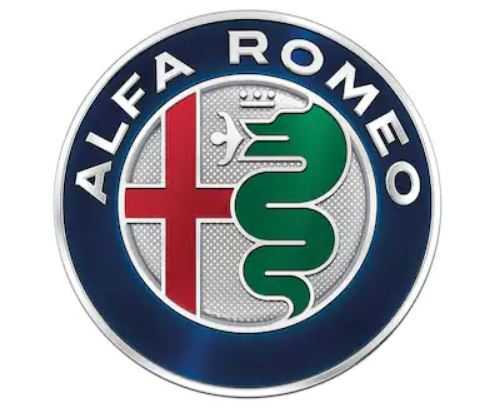2017 Alfa Romeo 4c Engine Oil and Fluids Instructions
Keeping the 2017 Alfa Romeo 4C’s engine oil and fluids in good shape is a key part of making sure it runs at its best, lasts as long as possible, and is generally reliable. It takes a lot of care to change the oil and fluids in this precision-engineered sports car, which is known for being exciting to drive. This detailed guide will teach you everything you need to know to properly manage the engine oil and other important fluids in your 2017 Alfa Romeo 4C. It will do this by giving you step-by-step steps and useful information. Maintaining the health and beauty of your 2017 Alfa Romeo 4C will be easy with this guide, whether you’re a dedicated owner wanting to protect your investment or a fan wanting to get the most out of this amazing car.
Engine Oil
Checking Oil Level
To ensure proper engine lubrication, the engine oil must be maintained at the correct level. Check the oil level at regular intervals. The best time to check the engine oil level is before starting the engine after it has sat overnight. Do not check the oil level when the engine is warm. Checking the engine oil levels when the engine is warm will give you an incorrect reading.
Checking the oil while the vehicle is on level ground, and has sat overnight, will improve the accuracy of the oil level readings. Maintain the oil level between the range markings on the dipstick. The safe range is indicated by a crosshatch zone. Adding 1 quart of oil when the reading is at the low end of the indicated range will result in the oil level at the full end of the indicator range.
CAUTION: Do not overfill the engine with oil. Overfilling the engine with oil will cause oil aeration, which can lead to a loss of oil pressure and an increase in oil temperature. This loss of oil pressure and increased oil temperature could damage your engine.
Change Engine Oil
The oil change indicator system will remind you that it is time to take your vehicle in for scheduled maintenance. Refer to the “Maintenance Schedule” for further information.
NOTE: The actual interval for changing the oil and replacing the engine oil filter depends on the vehicle usage conditions and is signaled by the warning light or message (if present) on the instrument panel or every 12 months.
Engine Oil Selection
For best performance and maximum protection for turbocharged engines under all types of operating conditions, the manufacturer recommends synthetic engine oils that are API Certified and meet the requirements of FCA Material Standard MS-12991.
Engine Oil Viscosity — 1750 Turbo Engine (SAE Grade)
SAE 5W-40 full synthetic engine oil is recommended for all operating temperatures. This engine oil improves low-temperature starting and vehicle fuel economy. Lubricants that do not have both the engine oil certification mark and the correct SAE viscosity grade number should not be used.
Materials Added To Engine Oil
The manufacturer strongly recommends against the addition of any additives (other than leak detection dyes) to the engine oil. Engine oil is an engineered product and its performance may be impaired by supplemental additives.
Disposing Of Used Engine Oil And Oil Filters
Care should be taken in disposing of used engine oil and oil filters from your vehicle. Used oil and oil filters, indiscriminately discarded, can present a problem to the environment. Contact your authorized dealer, service station, or governmental agency for advice on how and where used oil and oil filters can be safely discarded in your area.
Engine Oil Filter
The engine oil filter should be replaced with a new filter at every engine oil change.
Engine Oil Filter Selection
This manufacturer’s engines have a full-flow type disposable oil filter. Use a filter of this type for replacement. The quality of replacement filters varies considerably. Only high-quality filters should be used to ensure the most efficient service. MOPAR engine oil filters are high-quality oil filters and are recommended.
Engine Air Cleaner Filter
Refer to the “Maintenance Schedule” for the proper maintenance intervals.
WARNING: The air induction system (air cleaner, hoses, etc.) can provide a measure of protection in the case of engine backfires. Do not remove the air induction system (air cleaner, hoses, etc.) unless such removal is necessary for repair or maintenance. Make sure that no one is near the engine compartment before starting the vehicle with the air induction system (air cleaner, hoses, etc.) removed. Failure to do so can result in serious personal injury.
Engine Air Cleaner Filter Selection
The quality of replacement engine air cleaner filters varies considerably. Only high-quality filters should be used to ensure the most efficient service. MOPAR engine air cleaner filters are high-quality filters and are recommended.
Engine Cover
To avoid possible damage to the engine cover, please disconnect each of the four mounting studs by pulling the engine cover upward, and then lift off the complete cover. Tilting the engine cover when one or more studs are still engaged will lead to premature failure of the couplers. To reassemble the cover back onto the engine, first, make sure it is properly aligned, the oil cap is centered, and all four studs are lined up with their couplers. Then gently push on the four corners of the engine cover to snap the stud back into position. No tools are required to remove or reassemble the engine cover.
Maintenance-Free Battery
Your vehicle is equipped with a maintenance-free battery. You will never have to add water, nor is periodic maintenance required.
WARNING
- Battery fluid is a corrosive acid solution and can burn or even blind you. Do not allow battery fluid to contact your eyes, skin, or clothing. Do not lean over a battery when attaching clamps. If acid splashes in the eyes or on the skin, flush the area immediately with large amounts of water. Refer to “Jump-Starting Procedures” in “What To Do In Emergencies” for further information.
- Battery gas is flammable and explosive. Keep flame or sparks away from the battery. Do not use a booster battery or any other booster source with an output greater than 12 Volts. Do not allow cable clamps to touch each other.
- Battery posts, terminals, and related accessories contain lead and lead compounds. Wash hands after handling.
- The battery in this vehicle has a vent hose that should not be disconnected and should only be replaced with a battery of the same type (vented).
FAQ’s
A: The recommended engine oil is typically a high-quality synthetic oil with the specific viscosity mentioned in the owner’s manual.
A: Engine oil changes are generally recommended every 7,500 to 10,000 miles or as specified in the owner’s manual.
A: Yes, using synthetic oil is often recommended for better performance and protection, especially in high-performance vehicles like the 4C.
A: The oil filter traps contaminants and should be replaced during every oil change to maintain oil quality.
A: Use the engine oil dipstick to check the oil level. Insert the dipstick, remove it, and observe the oil level on the markings.
A: You can top up the oil if it’s running low, but if it’s consistently low, it might indicate a leak or excessive oil consumption, which should be checked by a professional.
A: Open the coolant reservoir cap when the engine is cool and check the level against the markings on the reservoir.
A: Use the recommended coolant type as specified in the owner’s manual, usually a specific coolant mixture.
A: Coolant replacement is typically advised every 30,000 to 60,000 miles or as specified in the owner’s manual.
A: Power steering fluid assists in steering and should be checked according to the owner’s manual’s instructions. Typically, it’s checked with the engine running.
A: Power steering fluid replacement is often recommended every 30,000 to 60,000 miles, but consult the owner’s manual for specific intervals.
A: Check the brake fluid level in the brake fluid reservoir, and if it’s low, use the recommended brake fluid type to top it up. Ensure cleanliness and avoid contamination.
A: Brake fluid replacement is typically advised every 30,000 to 60,000 miles, as brake fluid can absorb moisture and lose effectiveness over time.
A: Locate the windshield washer fluid reservoir, remove the cap, and add a suitable windshield washer fluid when the level is low.
A: It’s best to use a windshield washer fluid designed for all-season use and follow the manufacturer’s recommendations to prevent damage to the washer system.


